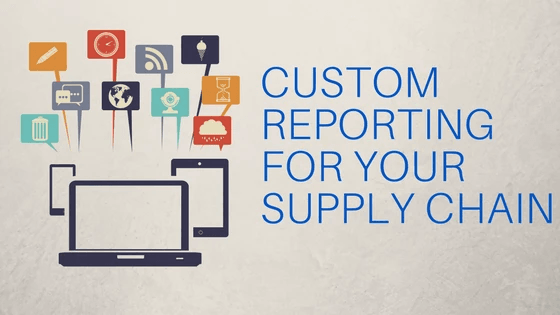

When we research the various projects that we quote in our desire to grow our businesses and expand our profit margins, intense scrutiny of the Scope of Work or Statement of Work is of utmost importance.
We obviously want to know how many product turns there will be, or what the seasonality of the freight volume looks like. We do know there is a certain fudge-factor of the +/- 20% on these numbers, but they give us a ballpark idea of what the prospective piece of business looks like.
One thing we often overlook in our excitement to solve the customers’ problem is their need for custom reporting. Defining your reporting requirements to your 3PL during the scope of work will allow them to accurately estimate the upfront costs and reasonable amount of time to create them. Additionally, defining reports that are Want vs. Need will save you money in IT charges for reporting that doesn’t provide value to your operations.
With logistics costs in the United States being close to 10% of our Gross Domestic Product (GDP), more companies are relying on 3PLs (third party logistics providers) to handle the complexity of their logistics activities, such as transportation and inventory management. Not only does this allow companies to focus on their core competencies, outsourcing avoids the capital expense of assets such as trucks, trailers, and warehouses.
A great 3PL partner should be an extension of your logistics department and provide a strategic partnership by optimizing your supply chain. Consistent reporting is imperative to support responsiveness and flexibility for your business. Not only should your 3PL be able to provide custom reporting, but the reporting you receive should be at an interval that supports your team to make quick business decisions in order to remain competitive.
In order to effectively meet the demands of customers, 3PLs need to have robust reporting capabilities; and that all starts with their Information Technology department.
View Keller Logistics Group’s New Capabilities Video
We all have standard reporting that we can get out of our TMS, WMS, or LMS. However, many times their provided reports do not provide enough information to effectively make business decisions. Or, the data is available, but it needs reformatted before it can be analyzed. With manual formatting and reporting, the opportunity for human error is greatly increased. The fewer times the data is touched, the more confident you can be that your reporting is accurate.
Custom reporting can export the data and automatically create a real-time reporting dashboard. A lot of customers are surprised with the amount of time they can save by automating their reporting. With our reporting dash boarding, we can take data that used to take someone 6 hours to gather and reformat, and set it up to automatically be available in a dashboard in real-time. It can save everyone a ton of time and energy.
Common types of reporting you may want to have access to include: visibility, forecasting, and analysis.
Visibility
A common obstacle of outsourcing is the assumption that if you outsource your logistics, you lose visibility to your product. However, with real time reporting, you have access to view the location of your product, whether that be in transit or in the warehouse, in real time.
Typically, the order data and shipment data are available in different operational systems, which may require manual updates in your inventory system when there is no communication between systems (EDI or otherwise). The ability for 3PLs to integrate with multiple service providers is becoming more common; allowing for increased visibility across the entire supply chain.
For shippers who are apprehensive about using brokers, technology to provide pick up and delivery notifications, or EDI/API connectivity to where the carrier’s TMS automatically updates in the customer’s system will provide real-time information as to where your product is while in transit.
Never Miss a Blog, Send Them to my Email!
Forecasting
Sophisticated Demand and Supply forecasting models can be created using available inventory movement data. These forecasts provide insights to customers allowing them to optimize their distribution and logistics network by reducing the inventory costs.
Current inventory levels can easily be monitored on a dashboard where the information can be as detailed as required and provide trace-ability.
Analysis
One of the largest cost factors in logistics is labor. Using custom reporting to help manage your labor costs can save lots of money on the operational side.
As part of material efficiency, monitoring your inventory and how often it is touched allows your warehouse team to plan were to place product to most efficiently move it in and out of the warehouse.
Other IT-based services that are provided by 3PLs are: transportation planning, online ordering, automatic invoicing, shipment tracing and tracking.
Read “Don’t Let Your 3PL Selection Break The Supply Chain”
Logistics management continues to become more complex as customers demand quick delivery of their products. Companies must compete for more than quality and price to be competitive as flexibility and speed are important factors in a supply chain. When information flows freely through the supply chain, companies can see how their supply chain is functioning as a whole, allowing consistent analysis to improve the overall operation.